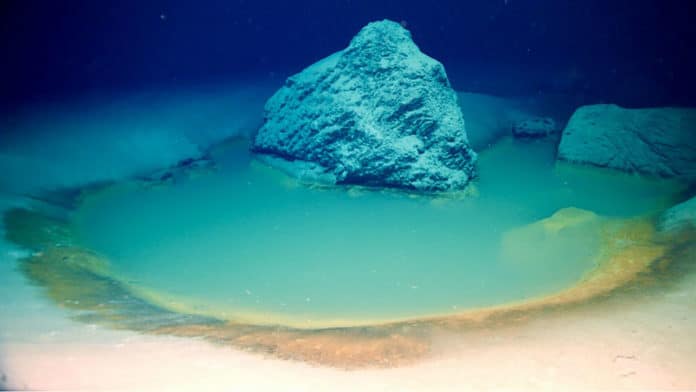Recently, scientists at the University of Miami (UM) Rosenstiel School of Marine, Atmospheric, and Earth Science, in collaboration with OceanX, Sam Purkis, professor and chair of the UM Department of Marine Geosciences and team, have discovered rare deep-sea brine pools in the red sea. They found the pools more than one mile beneath the sea surface (1,770 meters) in the Gulf of Aqaba, a northern extension to the Red Sea.
Brine pools are one of the most extreme environments on Earth. These pools are concentrations of water having an extremely high salinity compared to the surrounding ocean. Despite their high salinity, exotic chemistry, and lack of oxygen, these pools are teeming with life.
Scientists made this discovery using a remotely operated underwater vehicle (ROV) on the OceanXplorer. This discovery of a rich community of microbes that survive in extreme environments can help trace the limits of life on Earth. It can also be applied to the search for life elsewhere in our solar system and beyond.
These highly saline, oxygen-free pools, which are near the coast, are a record of ancient earthquakes, flash floods, and tsunamis that occurred in the Gulf of Aqaba. In this location of the Gulf of Aqaba, numerous faults and cracks in the seabed are related to the region’s tectonics.
Purkis said, “We were very lucky. The discovery came in the last five minutes of the ten-hour ROV dive we could dedicate to this project.”
Journal Reference:
- Purkis, S.J., Shernisky, H., Swart, P.K. et al. Discovery of the deep-sea NEOM Brine Pools in the Gulf of Aqaba, Red Sea. Commun Earth Environ 3, 146 (2022). DOI: 10.1038/s43247-022-00482-x
